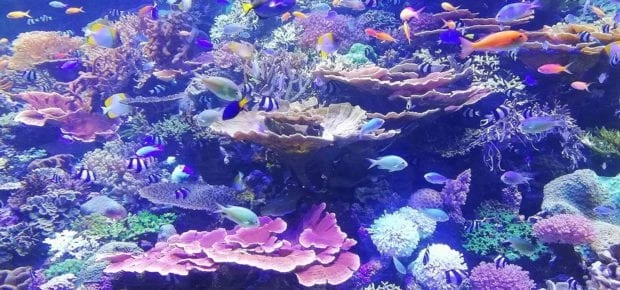
Partner Article
How Sustainable Technologies Can Help Protect Our Oceans
Given that oceans cover 71% of the Earth’s surface, there’s no question that they’re a major factor in the sustainability equation. As such, a number of research efforts are underway to both harness their energy (and in turn reduce our carbon footprint), and to clean them up, making them more sustainable for future generations.
Harnessing the Ocean’s Energy
The ocean’s energy-generation potential is tremendous and could help lead us to a more sustainable planet. An overview in Proceedings of the IEEE covers three emerging technologies focused on the ocean: wave energy converters, ocean thermal energy converters and tidal current systems.
Wave energy converters are oscillating bodies (like moorings, columns or man-made channels) that use the pressure of ocean waves to harness energy. Ocean thermal uses the temperature differential between the warmer ocean surface and the cold depths to drive a turbine. And tidal current systems are roughly similar to wind turbines, using the kinetic energy of tidal currents to generate power. All three have significant potential – for more background and visuals, the case studies here are a good reference point.
Making Offshore Wind Power More Efficient
In a new paper published by the IEEE Power & Energy Society, researchers looked into three potential methods of power transmission from offshore windfarms to see which would be most effective. After all, as they note early in the paper, “in the shallow Atlantic waters of the Northeast, proximate to large load centers, offshore wind could provide all the electricity now consumed by all Northeast coastal states three times over.”
They compared three transmission scenarios involving alternating current, direct current with voltage-source conversion and a combination of the two. The combination was most efficient: “The lattermost allows large-scale developments of offshore wind power plants and can be technically superior, but only makes sense when analyzed at a scale greater than a single project.” In that sense, advanced planning of offshore wind farms would be essential.
Reducing Emissions from Shipping
When it comes to shipping, traffic isn’t just a concern for delivery trucks. Ocean routes get congested as well, taking longer for ships to get to their destinations, in turn leading to more emissions. In a paper on IEEE Access, researchers from Greece explain how they developed software that can detect which routes are most likely to be congested, those with the biggest impact on shipping times and alternate paths/ports that ships can use.
With emissions controls getting more stringent in local waterways around the world, small ships like ferries and cruise ships have started incorporating hybrid power systems that use lithium-ion batteries to store energy.
While there’s an appetite to apply hybrid technology to larger shipping vessels, it’s a complicated proposition. Researchers from South Korea recently set out to prove that the technology can be applied to medium-sized oceangoing ships. They found that “by integrating an [energy storage system] into a power system, it is possible to operate with fewer generators,” thus reducing CO2 emissions.
Grappling with Microplastics and Pollution
Finally, microplastic waste is an issue that we’re still trying to understand. Technology has thus far been playing a role in discovering the geographic limits of it, with specific fixes still down the pipeline.
This was posted in Bdaily's Members' News section by IEEE .








 2000 reasons for North East business positivity
2000 reasons for North East business positivity
 How to make your growth strategy deliver in 2026
How to make your growth strategy deliver in 2026
 Powering a new wave of regional screen indies
Powering a new wave of regional screen indies
 A new year and a new outlook for property scene
A new year and a new outlook for property scene
 Zero per cent - but maximum brand exposure
Zero per cent - but maximum brand exposure
 We don’t talk about money stress enough
We don’t talk about money stress enough
 A year of resilience, growth and collaboration
A year of resilience, growth and collaboration
 Apprenticeships: Lower standards risk safety
Apprenticeships: Lower standards risk safety
 Keeping it reel: Creating video in an authenticity era
Keeping it reel: Creating video in an authenticity era
 Budget: Creating a more vibrant market economy
Budget: Creating a more vibrant market economy
 Celebrating excellence and community support
Celebrating excellence and community support
 The value of nurturing homegrown innovation
The value of nurturing homegrown innovation